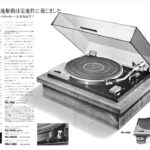For Honda Pioneer 1000 owners in colder climates or those using their UTV for winter tasks like snow plowing, optimizing your heater is crucial for a comfortable ride. Getting the most out of your Honda Pioneer 1000 Heater doesn’t necessarily require expensive upgrades. Simple, cost-effective modifications can significantly enhance cabin warmth and overall heating efficiency.
One of the most impactful adjustments is partially blocking your radiator. By obstructing around half of the radiator surface, you encourage the engine to reach its optimal operating temperature quicker. This not only improves heater performance but also aids in burning off condensation within the engine oil, contributing to engine longevity. A straightforward method involves using a piece of cardboard, cut to size to span across the radiator and fan shroud, ensuring it’s long enough to prevent fan interference. This DIY radiator block can be easily inserted and removed as needed, allowing for temperature adjustments based on the weather conditions.
Another key area for improvement is sealing the gaps, particularly around the lower portions of your half doors. Cold drafts entering through these gaps can drastically reduce the effectiveness of your Honda Pioneer 1000 heater. Employing truck tailgate seal or even pool noodles to seal these openings makes a noticeable difference in trapping heat inside the cab. Beyond warmth, sealing the doors can also minimize rattling, offering a quieter and more comfortable ride. These seals can be durable, lasting for several years under normal use.
When considering vent placement for your Honda Pioneer 1000 heater, especially if you’re using an under-seat mounted heater core, it’s generally advisable to prioritize floor vents over defrost vents. While defrost vents might seem appealing, the extended ductwork required for under-seat installations can lead to heat loss and reduced airflow to the windshield. Furthermore, routing ductwork under the floor can pose a risk to the drive shaft and subtrans seal. Directing all vents to the floor maximizes heat output within the cabin, providing more effective warmth where it’s needed most.
Fogging can be an occasional issue, particularly in foggy conditions, even with an enhanced Honda Pioneer 1000 heater setup. A simple 12V fan can be highly effective in circulating air within the cab and mitigating fog buildup on the windshield. This ensures clear visibility, especially during tasks like snow plowing or navigating in challenging weather.
In conclusion, maximizing your Honda Pioneer 1000 heater for cold weather comfort is achievable through practical and simple modifications. Radiator blocking, door sealing, and strategic vent placement are key adjustments that enhance heating efficiency. For occasional fogging, a 12V fan provides a quick solution for improved visibility. By implementing these tips, you can significantly improve your UTV experience in cold conditions.


